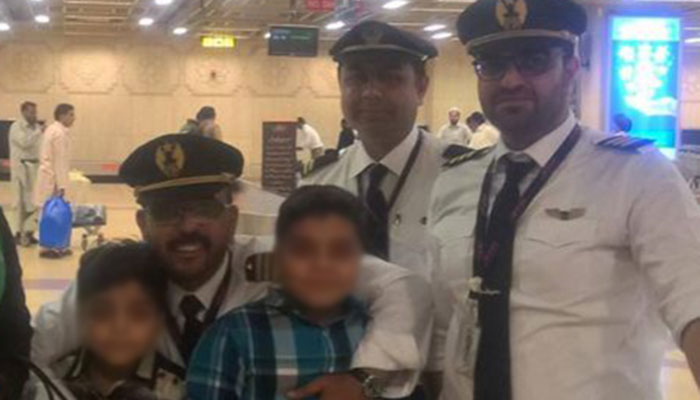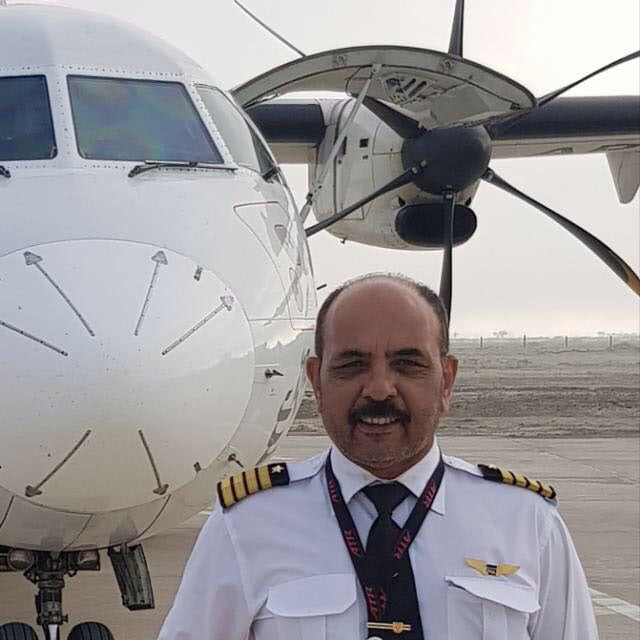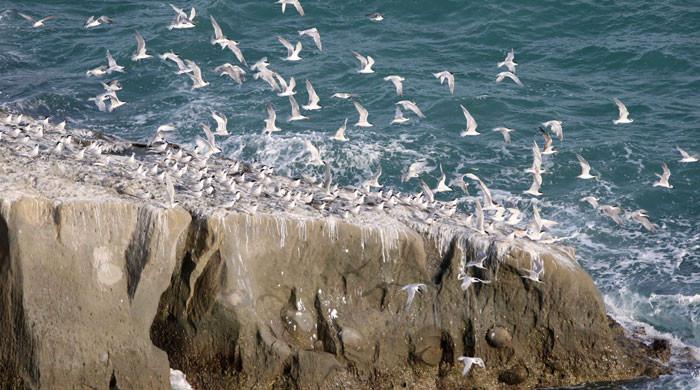Hailed as hero, PIA pilot saves passengers from possible tragedy
There are old pilots and bold pilots, but there are no old bold pilots
November 20, 2017

KARACHI: As Captain Amjed Mehboob and First Officer Osman Hashim Baloch — both seasoned professionals in their own right — commandeering PIA's ATR72-500 operating as PK536 took to the skies, neither thought they were about to become heroes. For them, it was just another routine flight.
It was not.
A video of Captain Amjed Mehboob being lauded by his passengers for putting their safety first has been doing the rounds on social media.
In the video, as the passengers are celebrating the pilot's actions and decision to divert the flight, the modest Captain Mehboob expresses his gratitude for the appreciation and honour bestowed on him but says:
"Everything is in the hands of the Almighty, nothing is in the hands of man. People try to push forward because of their ego; the amount of turbulence the plane was already enduring, if the situation got worse and something broke, things would be out of my control."
As he acknowledges that there were children and families on board, his voice is drowned by applause and chants of "thank you, Sir, thank you very much," from his passengers.
Red Streaks
Geo.tv reached out to Captain Amjed Mehboob and spoke to him. The following is derived from our conversation:
Following protocol, as the engines of the ATR72-500 sprung to life, Captain Mehboob and FO Baloch checked the weather on the radar; clear skies with wind clocking in at 7 knots and a visibility of 3 kilometres. It looked A-OK.
The journey from Karachi to Sukkur, at a flight distance of approximately 350 kilometres, was going to take between 60-70 minutes.
Cruising at an altitude of 15,000 feet, as the ATR passed over Nawabshah and came up to waypoint Capri — which is when the aircraft switches communication from Karachi air traffic control (ATC) to Sukkur ATC - Captain Mehboob checked the weather again. Sukkur ATC responded that it was the same as before.
With only 40-50 nautical miles to go, the smooth journey would be over soon. Captain Mehboob recalled during our conversation that another ATR coming in from Islamabad was on landing approach to Sukkur and everything went smoothly for them.
Just then Captain Mehboob noticed there were heavy clouds below them, to avoid turbulence as PK536 made its approach at Sukkur, he decided to descend from 15,000 to 7,000 feet so he could make his approach under the clouds. Permission was granted.
As the ATR levelled off at 7,000 feet, embedded Cbs (pronounced See Bees) or cumulonimbus clouds were becoming active.
The name cumulonimbus is derived from Latin, cumulus which means heap and nimbus which translates to 'stormcloud' is a dense towering vertical cloud which is carried by powerful upward air currents and can cause turbulence, lightning, large hail, significant downdrafts as well as very strong updrafts.
What is worse for pilots, is that the cumulonimbus clouds are not visible on the radar like other weather anomalies.
As soon as the plane levelled off, Captain Mehboob noticed red on the radar, and immediately reacted, asking his co-pilot:
"What's that? Why didn't we see it earlier?"
The turboprop was suddenly being hammered by rain and icing and wind shear, causing an uncommanded change in speed, making the ATR jump between 220 and 160 nautical miles. For the layman, that's the kind of turbulence you probably have never even imagined.
Realizing there was something very severe ahead of his plane, which the ATR had as yet not even entered, Captain Mehboob told FO Baloch to turn the bird 30 degrees right. The turbulence continued, so they turned another 30 degrees right.
"I asked Sukkur to allow us to descend further to 3,000 feet."
Having dropped from 15,000 to 3,000 feet, PK536 was no longer even pointing towards its destination. Captain Mehboob turned the plane back towards Sukkur in an attempt to make a direct approach to his destination.
"As soon as we turned towards Sukkur, I could see three streaks of red on the weather radar and I decided that we are not going to go in again."
Captain Mehboob contacted Sukkur ATC, the condition there had worsened. Wind speed which was at a calm 7 knots had gone up to 35 knots. Even before the conversation ended, Sukkur ATC informed PK536 they were experiencing a thunderstorm.
There's a saying among pilots. There are old pilots, and there are bold pilots, but there are no old bold pilots. Landing or even making an attempt to land during a thunderstorm would be futile.
At that moment Captain Mehboob decided to turn around. He abandoned airway Juliet 119. "I took Juliet 112 and we took the route to [waypoint] Zohar and climbed to 12,000 feet, luckily we found clear skies.
The ordeal was over. PK536 was out of danger and was heading back to Karachi.

Speaking over the phone Captain Amjed Mehboob repeated what he had told his passengers. "It was a routine flight. It was the Almighty who put it in my heart."
Thank you, Captain Mehboob and FO Osman Hashim Baloch. While you only did your duty to many others, you are heroes.
Recent crashes caused by cumulonimbus clouds
Weather anomalies and thunderstorms can wreak havoc on aeroplanes, both in the air and on the ground. When AirAsia Flight QZ8501 went missing in December 2014 it was suspected the Airbus A320-216 had encountered cumulonimbus clouds. 162 people lost their lives that day.
The crash of FlyDubai Flight FZ891 that went down just short of the runway in Rostov-on-Don in Russia last year on March 19 was caused by none other than cumulonimbus clouds. 62 people lost their lives.
- Ovais Jafar is a Multimedia Journalist currently serving as Editor Geo.tv (English), Editor Multimedia Geo News. He tweets @ovaisjafar











